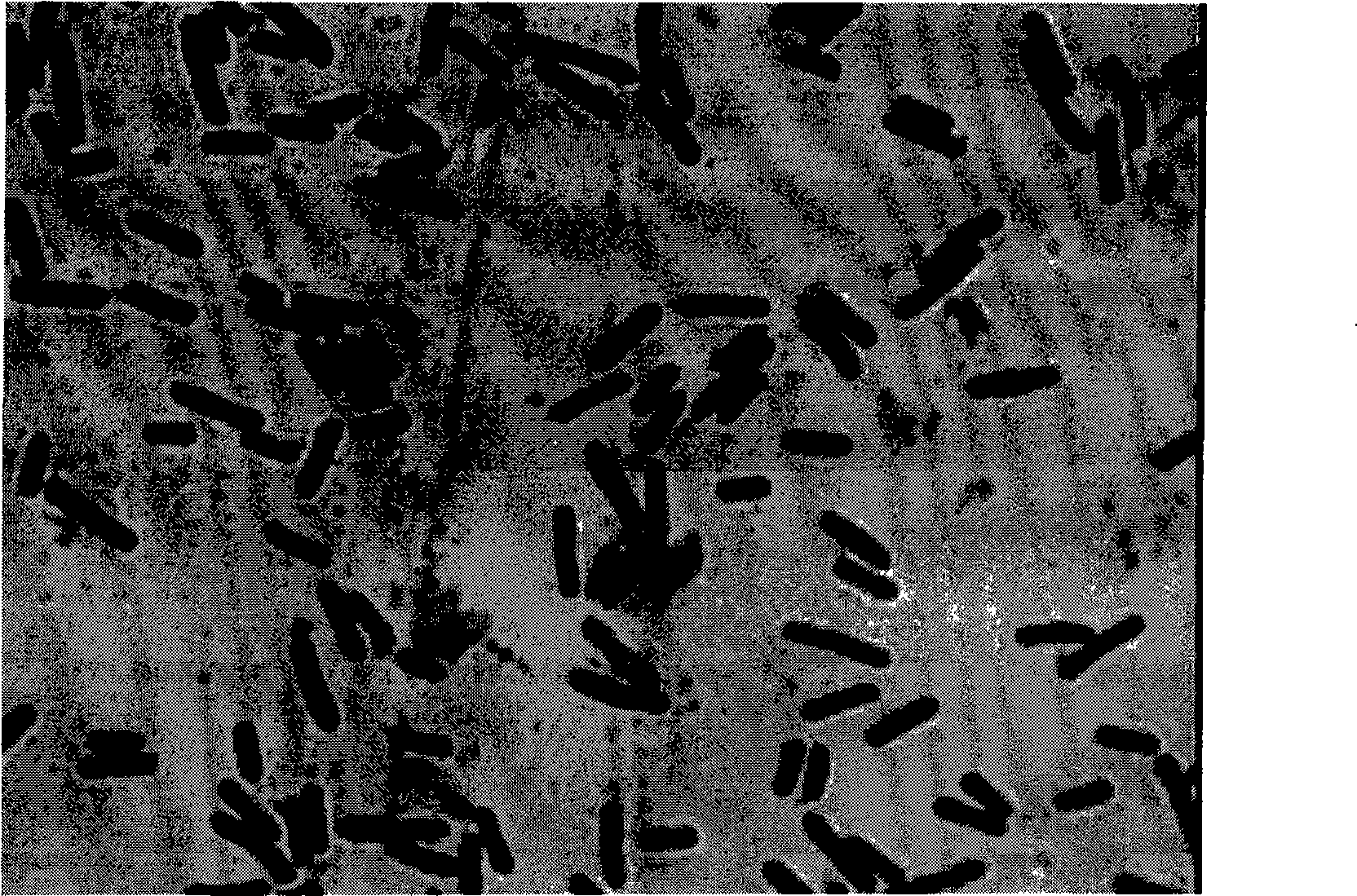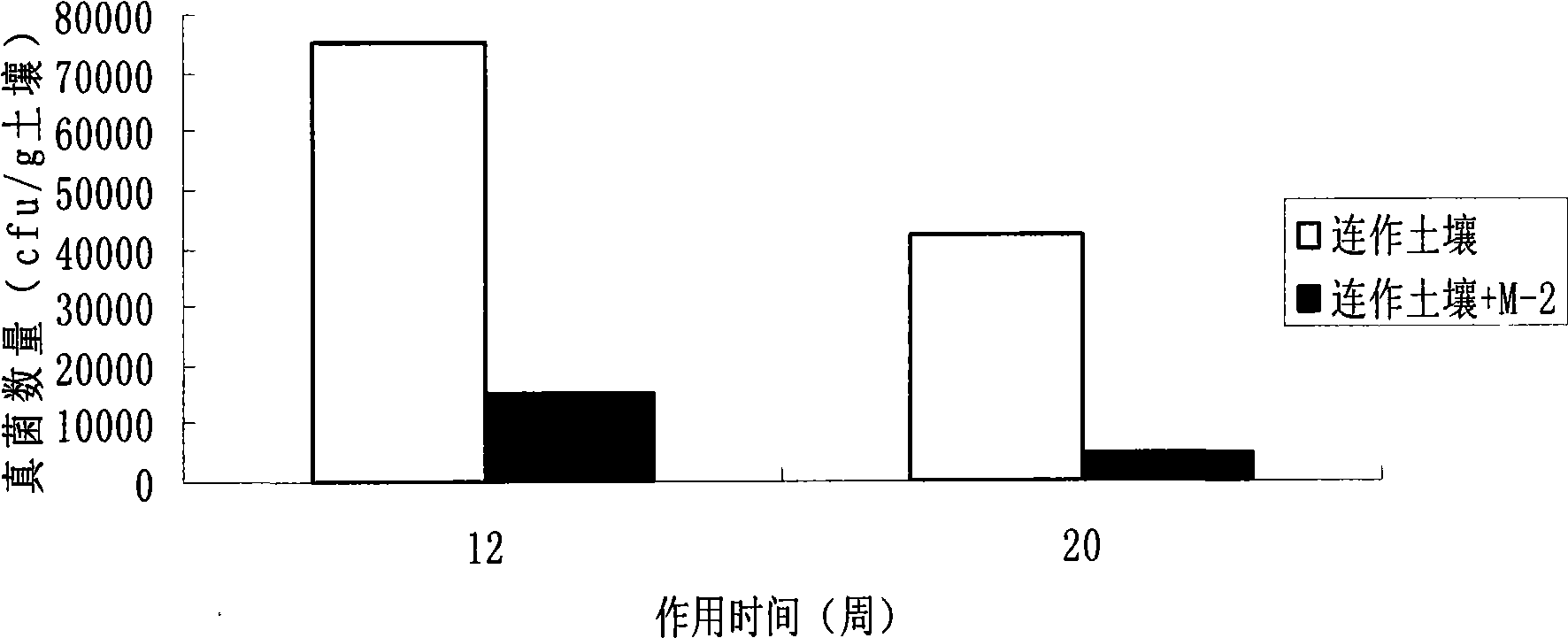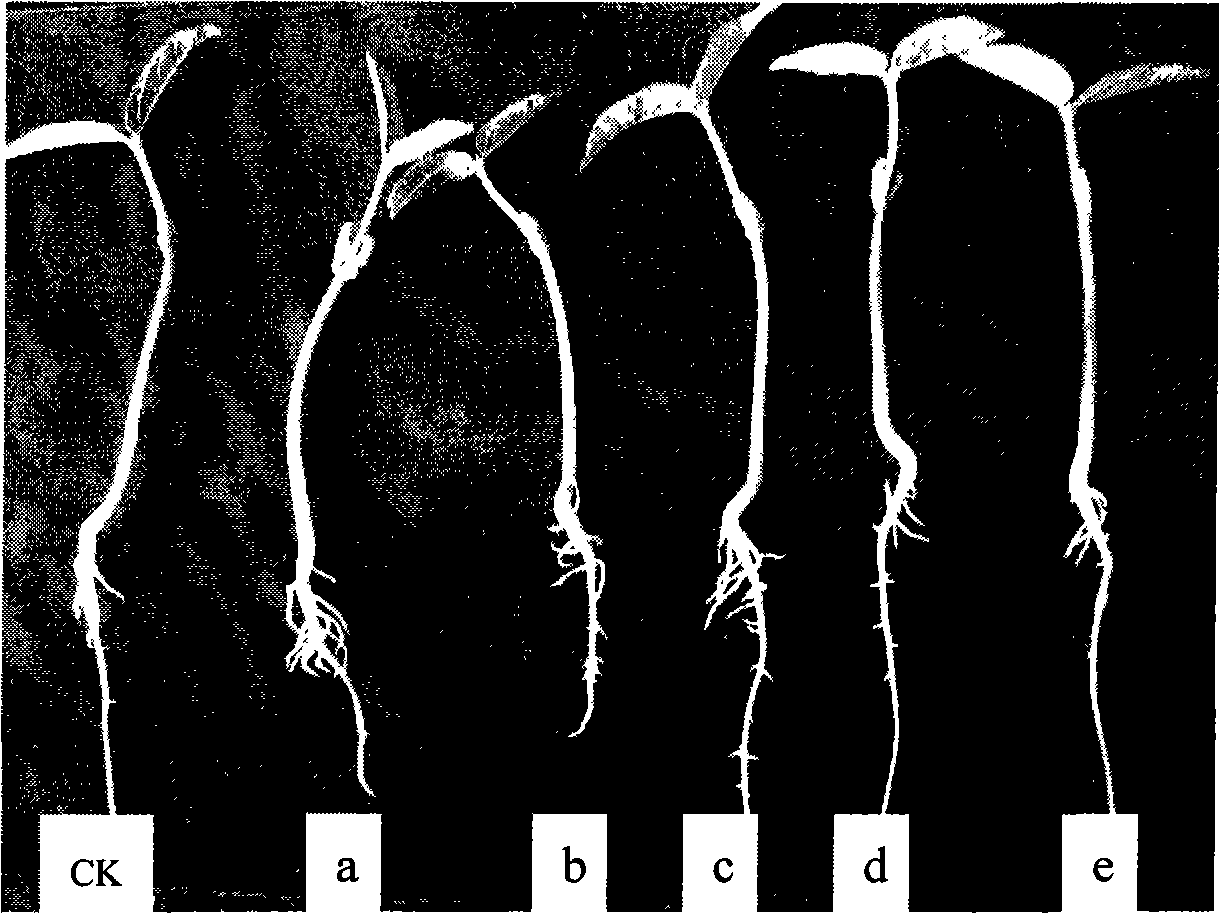Bacillus subtilis and application thereof in prevention and treatment of continuous cropping obstacle of greenhouse vegetable
A technology of Bacillus subtilis and strains, applied in the fields of biotechnology and agricultural disease prevention and control, can solve the problems of high multiple cropping index, reduced yield, serious vegetable diseases and insect pests, etc., and achieve strong inhibitory effect and growth promotion effect
- Summary
- Abstract
- Description
- Claims
- Application Information
AI Technical Summary
Problems solved by technology
Method used
Image
Examples
Embodiment 1
[0028] Screening and breeding of the Bacillus subtilis M-2 bacterial strain provided by the invention.
[0029] Soak the roots of marine mangrove plants in a large amount of sterile water for about 20 minutes, wash off the soil adhering to the roots, and then rinse the remaining soil on the roots with sterile water. This part of the soil is the rhizosphere soil sample. Collect water samples in 100mL clean and sterilized wide-mouth plastic bottles, take 15mL after shaking evenly, and inoculate aseptically in 100mL ZoBell medium (medium composition: peptone 5g, yeast extract 1g, iron phosphate 0.1g, aged seawater 1000mL, pH7.6~7.8), cultured with shaking at 36°C for 6 days. Observed on the LB plate, the diameter of the colony cultivated for one day is 3-5 mm, round, with neat edges and moist surface. After mixing the 6-day enriched culture solution, take 0.1mL and spread it on the nutrient agar medium, culture at a constant temperature of 36°C for 2 days, number according to th...
Embodiment 2
[0031] Identification of the morphological characteristics and physiological and biochemical characteristics of the Bacillus subtilis M-2 strain provided by the invention.
[0032] Refer to the test method of "Bergey's Manual of Systematic Bacteriology" Vol.VIII to detect its Gram staining, cell size and shape, presence or absence of flagella and spores, growth temperature, and pH range. NaCL tolerance. Catalase, H 2 S test, starch hydrolysis, cellulose hydrolysis, MR test, phenylalanine deamination, urease test, oxidase, gelatin liquefaction, tyrosine degradation, V-P test, and utilization of mannitol, arabinose, galactose, xylose , rhamnose, sucrose, inosose and citrate tests.
[0033] The results showed that the bacterium was Gram-positive, rod-shaped, with a size of 0.5 μm to 1.0 μm × 3.5 μm to 6.0 μm, terminal or subterminal spores, perinatal flagella, and movement (see figure 1 ). The growth temperature is 27-45°C, the pH is 4-9, and the NaCL tolerance is 0-2%. Cata...
Embodiment 3
[0035] The invention provides the PCR amplification and sequence determination of the 16S rRNA gene of the Bacillus subtilis M-2 strain.
[0036] The strain was inoculated in LB medium, 120 rpm, 37°C shaking culture for 10 hours, the bacteria were collected by centrifugation, after suspension, lysozyme and SDS were added to break the wall, the genomic DNA was extracted by the phenol-chloroform method, and the positive phase primer 27F(5' -GAGAGTTTGATCCTGGCTCAG-3') and reverse primer 1541R (5'-AAGGAGGTGATCCAGCC-3'), PCR amplification of its 16S rRNA gene was performed, and the amplified product was sequenced by Beijing Sanbo Company. The PCR conditions are: 94°C, 10min; 94°C, 45s; 55°C, 45s; 72°C, 90s; 30 cycles, stored at 4°C. The length of the 16S rRNA gene sequence is 1543bp, the accession number in GenBank is EU333948, and the similarity with Bacillus subtilis (AB110598) is 99%. The results are shown in the sequence listing.
PUM
| Property | Measurement | Unit |
|---|---|---|
| Growth temperature | aaaaa | aaaaa |
Abstract
Description
Claims
Application Information
 Login to View More
Login to View More - R&D
- Intellectual Property
- Life Sciences
- Materials
- Tech Scout
- Unparalleled Data Quality
- Higher Quality Content
- 60% Fewer Hallucinations
Browse by: Latest US Patents, China's latest patents, Technical Efficacy Thesaurus, Application Domain, Technology Topic, Popular Technical Reports.
© 2025 PatSnap. All rights reserved.Legal|Privacy policy|Modern Slavery Act Transparency Statement|Sitemap|About US| Contact US: help@patsnap.com



